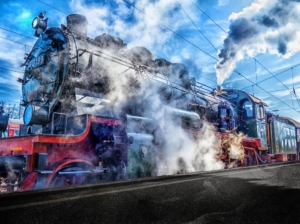At Shepherd
Engineering Search, we want to celebrate Women’s National History Month by looking
at the present and past contributions of female engineers to an ever-changing,
exciting industry.
The trend
today is to create a workforce that reflects the growing multifaceted makeup of
today’s society. Research shows that a diverse
workforce drive profits, as well as fostering innovative
thinking. Another positive is creating an environment that welcomes
those underrepresented in an industry to actualize their potential.
The
following are three trailblazing women engineers of the past that have made
crucial contributions to this ever-changing and dynamic field.
1) Marilyn Jorgensen Reece: The Designer of the San Diego-Santa Monica
Freeway
In Marilyn
Jorgensen Reece’s day, most technically gifted women were encouraged to pursue
a teaching career. Reece decided to ‘reverse the trend’, so she refocused her efforts
to becoming a prominent engineer of her day.
Reece had a strong interest in mathematics, which drove her to pursue a
career in engineering.
Reece was
responsible for many breakthroughs. She was the first woman to be a Registered Civil
Engineer in the State of California. Reece did not stop her trail blazing
efforts with this achievement; she also designed the San Diego-Santa Monica freeway
interchange in Los Angeles, CA – becoming the first female engineer to construct
a freeway in California.
Commentators
of the time such as Reyner Banham spoke highly of the interchange: “The Santa Monica/San Diego
intersection is a work of art, both as a pattern on the map, as a monument
against the sky, and as a kinetic experience as one sweeps through it.”
Cited in the Los Angeles Times article That
interchange you just: drove was
designed by a woman, by Michelle Maltais (https://www.latimes.com/local/lanow/la-me-ln-freeway-marilyn-reece-20160311-snap-htmlstory.html).
As well as
the freeway’s aesthetic looks, Reece’s main goal was to create long arcing
curves. Unlike many stop-start freeways, the San Diego-Santa Monica freeway
interchange curved shape enables drivers to maintain high speeds.
During
Reece’s 35-year engineering career, she was responsible for a variety of
projects such as the 210 Freeway through Sunland in 1975. In 1983, The City of
Los Angeles recognized Reece for her noteworthy contributions. In 1991, she became a life member of the
American Society of Engineers.
After she
passed in 2004, the California Department of Transportation dedicated and
renamed the San Diego-Santa Monica freeway interchange, ‘The
Marilyn Jorgenson Reece Memorial
Interchange’.
2) Mary Walton: Two
innovations designed in a Brooklyn-based apartment
Mary Walton held
no previous engineering qualifications. Her interest and passion in solving
mechanical problems led to her to become an engineer. Walton was a boarding
house owner, which could be unusual beginnings for one of the
most noteworthy engineers of her time. Walton’s story coincides with
the industrial revolution where middle-class workers from rural areas moved to
booming cities such as New York. Together with this unparalleled growth, where factories
sprang up all over the nation like monopoly hotels came the problem of
increasing pollution. Rail (elevated train) networks established throughout
metropolitan areas meant there was also a growing problem of noise pollution.
How Watson solved both
airborne and noise pollution
Mary Walton
began working on an invention in her Manhattan basement to solve the issue of
airborne pollution. In approximately 1879, Walton created a way to reduce
emissions before they became airborne, redirecting them into the sewage waters
below ground.
Walton also worked
in her engineering headquarters, her Manhattan basement, where she built a
model railroad and experimented with a variety of noise dampening solutions.
Walton took containers and put a small bell in each, then separately filled
them up with horsehair, cotton, newspaper, and sand.
She then rattled each container to identify the one that best absorbed the
sound of the bell.
Then she
fixed her model rails in a wooden box-structure. She first covered it with tar
to weatherproof the structure, then lining it with cotton and filling it up
with sand. She found that the mixture of tar, cotton, and sand worked best to
reduce the sound from the nearby train tracks. A new sound proofing system was
born! A more current version, based on Watson’s original design, is widely used
today.

3) Emily Warren Roebling – From an Engineer’s Secretary to Project Manager
– Completing the Brooklyn Bridge
Emily Warren
Roebling was not a fully qualified engineer, but later demonstrated abundant
qualities of an engineering trailblazer including leadership, creativity and an
unshakable self-belief.
Roebling was
the brains, the energy, and the strong will behind finishing building the
iconic Brooklyn Bridge; a landmark piece of engineering that connected Brooklyn
and Manhattan. It was also the longest suspension bridge of its time. Since its
construction in 1883, the Brooklyn Bridge has inspired many artistic creations,
the composition of musical pieces, and projects of both architects and
engineers.
Erica Wagner
author of Washington Roebling: The man
who built Brooklyn Bridge said that without Emily Warren Roebling’s
contribution one of the nation’s most iconic bridges would not be standing
today.
Emily Warren
Roebling helped to transform her husband’s
vision of the bridge into reality. She first began as her husband’s Secretary,
making her way back and forth from the project sight, all the while reading as
much as she could about civil and construction engineering.
Roebling
took responsibility for managing the project including interfacing with
trustees and campaigning. In addition, she eventually needed to take over the
project from her husband who contracted a mystery illness. Roebling had plenty
to do to complete the bridge’s construction.
She then
took the role of Engineering Manager where she was responsible for negotiating
supply materials, and managing construction contacts. Roebling also used her inherent lawyer-like
skills to use diplomacy in arguing her case against the Mayor of New York who
wanted to remove her husband from the project.
The project
took 14 years to finish. During that time, Roebling had to overcome corrupt
politicians, fraudulent construction contractors,
and other detractors.
The project
was finally completed on the May 24th-1883 with a plaque that read
(at the) “Back of every great work we can find the self-sacrificing devotion of
a woman.”
The
efforts of the aforementioned engineers have no doubt created new possibilities
for female engineers today, but we still have a long way to go to create
equality in the engineering workplace.
Let us look at what is happening in current workforce trends in the
industry.
Positive changes ahead: more women are
entering engineering
In
the baby boomer generation, there were very few women engineers, let alone female
university students. When female graduates entered the world of work, they
faced a difficult transition. Engineering offices that now embrace a culture of
diversity were not always like that.
Happily,
today this is changing for the better, although there is long way to go before
the industry arrives at a parity. With a
rise in women graduates, and many entering the engineering industry, the
pendulum is swinging towards an equilibrium.
Amanda
Comunale writing for Victaulic says there is a similar pattern in
the construction industry. While women working in this field are
still a meager amount at 9%, the number looks like it is rising steadily.
According
to national statistics from U.S. Bureau of Labor Statistics, 14.8% of
women are working in civil engineering roles, with 9.4% now
occupying electrical engineering positions.
Among those, supporting an increase in women entering engineering profession is NH Department of Transportation Commissioner Victoria Sheehan. Sheehan makes an important point when she says that although there has been an increase in women throughout the industry, certain disciplines such as civil engineering have fewer female engineers*.
Sheehan adds (cited in Engineering a career: More women are entering, and thriving in, a field that was once far less welcoming,by Liisa Rajalla*) “there needs to be a concentrated effort over the next 10-20 years to ensure students are encouraged to continue to pursue engineering careers, positively affecting the entire industry*.”
Trailblazers of the past that opened the
way for engineers of today
At Shepherd
Search Group, we keep a close eye on trends in the engineering industry. This Woman’s National History Month, we
wanted to trace the path of how women trailblazing engineers of the past that
have created a launchpad for today’s professionals.
It
is remarkable to think that the likes of Emily Warren Roebling who had no
engineering qualifications yet provided contributions that inspire the
engineers of today. Without her, there
would be no Brooklyn Bridge. Marry
Watson and Marilyn Jorgensen Reece contributions are just as influential.
The
good news is that with increasing amounts of women entering all fields of
engineering, we are sure that when we look back there will be even more
trailblazing efforts to praise.
(* Engineering a career: More women are
entering, and thriving in, a field that was once far less welcoming,by Liisa Rajala)

